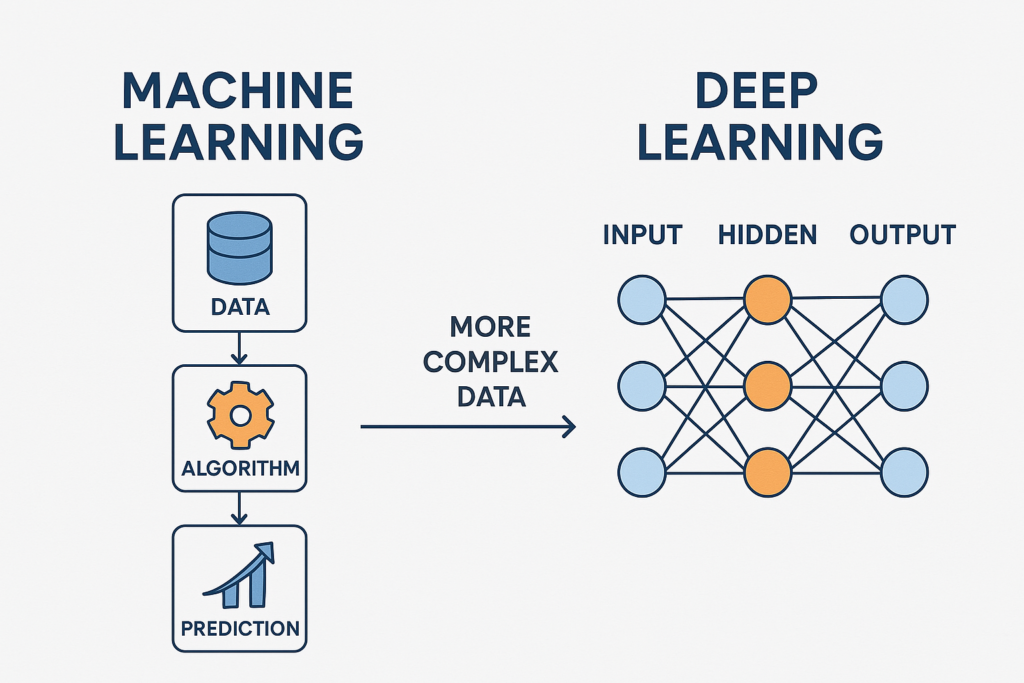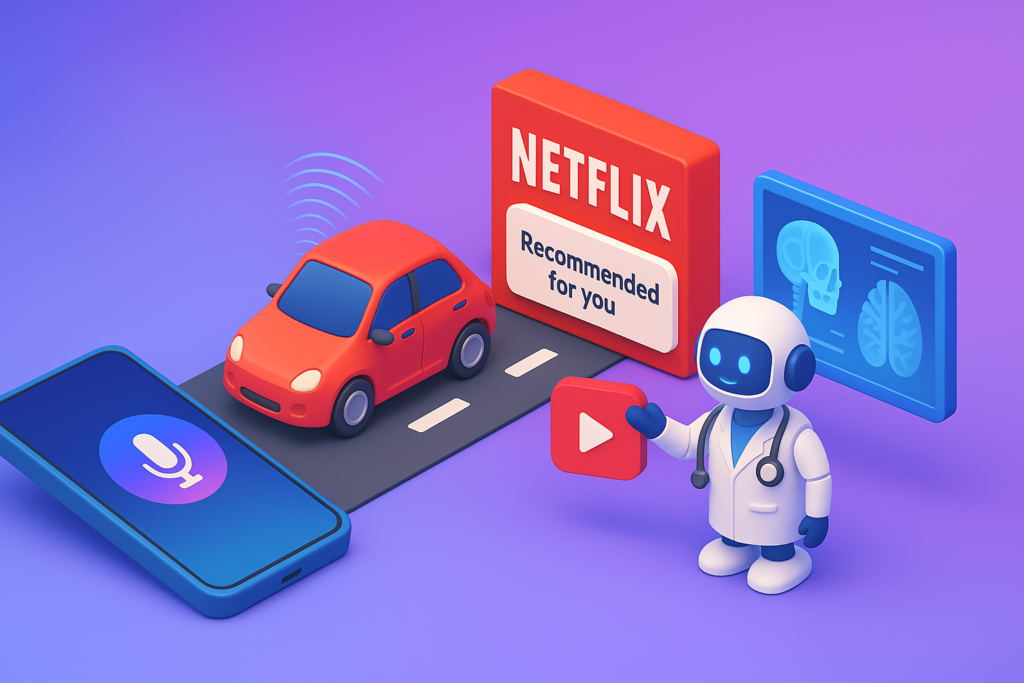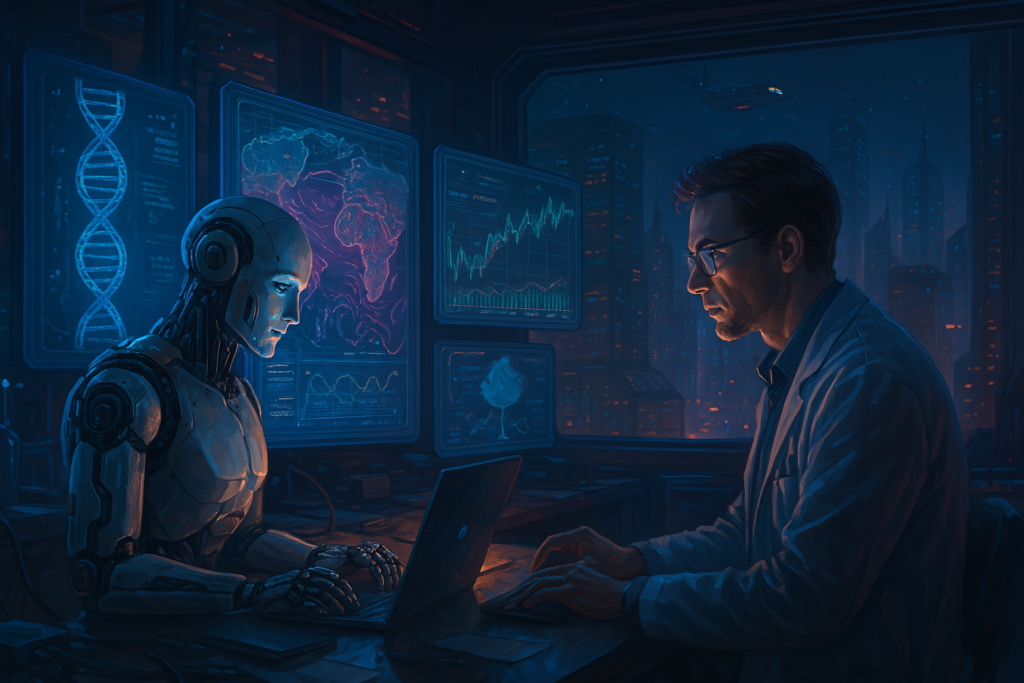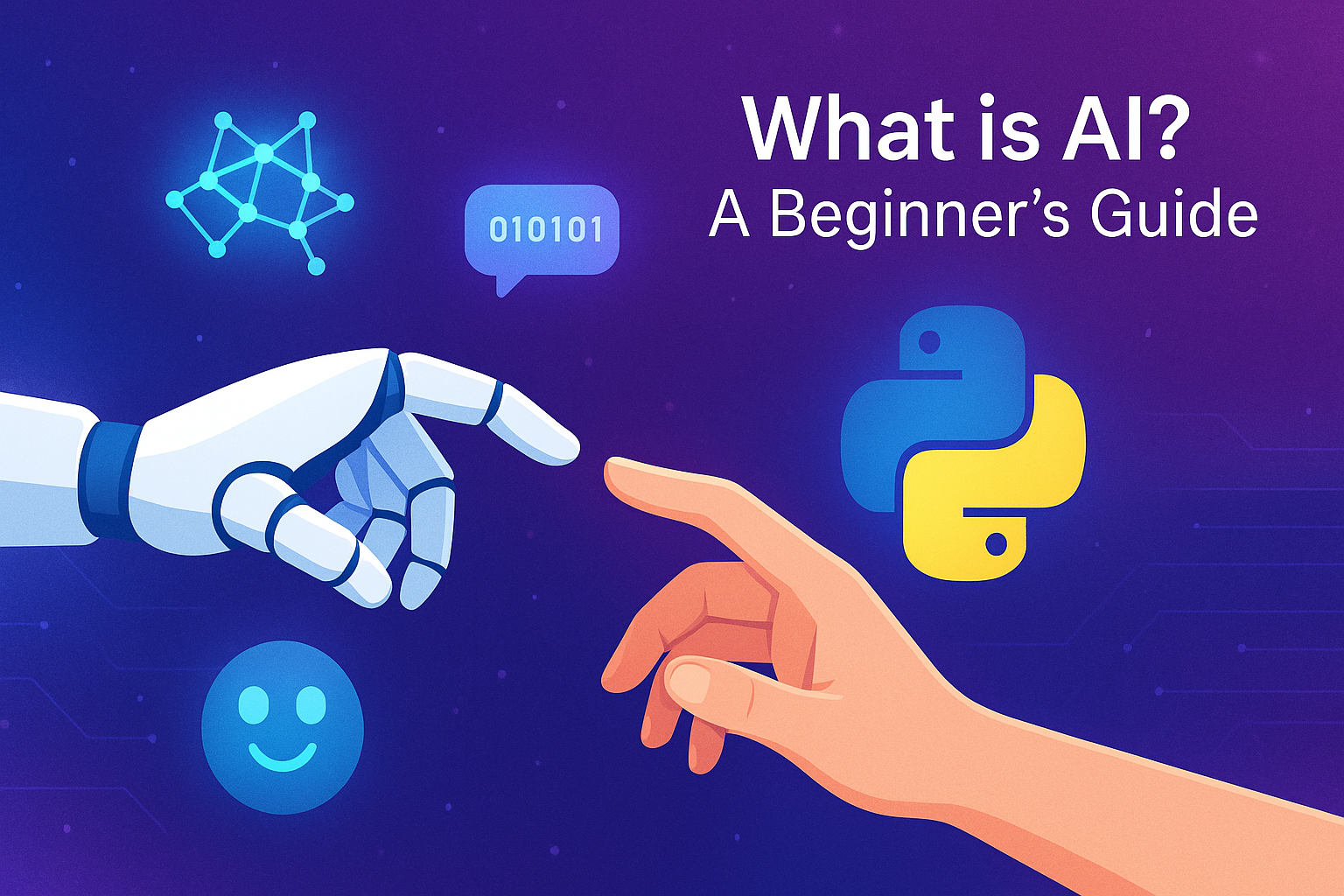Artificial Intelligence (AI) is everywhere—from voice assistants like Siri and Alexa to self-driving cars and personalized Netflix recommendations. But what exactly is AI, and how does it work?
In this beginner-friendly guide, we’ll break down:
✔ What AI really means
✔ How AI learns (Machine Learning vs. Deep Learning)
✔ Real-world examples of AI you use daily
✔ The future of AI (and why it matters)
What Is Artificial Intelligence (AI)?
AI refers to machines that can perform tasks that typically require human intelligence. These include:
Recognizing speech (voice assistants)
Identifying objects in photos (facial recognition)
Making decisions (autonomous robots)
Translating languages (Google Translate)
Unlike traditional software, AI systems learn from data instead of following fixed instructions.
🔗 Learn more: IBM’s Guide to AI
How Does AI Learn? (Machine Learning vs. Deep Learning)
1. Machine Learning (ML)
AI learns from data patterns without explicit programming.
Example: Spam filters improve by analyzing millions of emails.
2. Deep Learning (DL)
A more advanced form of ML using neural networks (inspired by the human brain).
Example: ChatGPT generates human-like text by processing vast amounts of language data.
🔗 Difference explained: Machine Learning vs. Deep Learning

AI in Everyday Life (Real-World Examples)
| AI Application | What It Does |
|---|---|
| Virtual Assistants (Siri, Alexa) | Understands and responds to voice commands |
| Recommendation Systems (Netflix, Spotify) | Suggests movies/songs based on your habits |
| Self-Driving Cars (Tesla) | Uses sensors & AI to navigate roads |
| Fraud Detection (Banks) | Flags suspicious transactions in real-time |
| Medical Diagnosis (IBM Watson) | Helps doctors detect diseases faster |
🔗 More examples: Forbes AI Applications

Types of AI (Narrow AI vs. General AI)
1. Narrow AI (Weak AI)
Designed for specific tasks (e.g., chess-playing AI, facial recognition).
Most AI today is Narrow AI.
2. General AI (Strong AI)
Hypothetical AI that thinks like a human (e.g., sci-fi robots).
Doesn’t exist yet, but researchers are working on it.
🔗 Read about AGI: MIT’s Explanation
Why Is AI Important?
✅ Saves time – Automates repetitive tasks (e.g., customer service chatbots).
✅ Improves accuracy – Reduces human errors (e.g., medical scans).
✅ Solves complex problems – Helps predict climate change, optimize traffic, etc.
⚠ Challenges:
Job displacement concerns
Ethical risks (biased algorithms, deepfakes)
🔗 Ethics in AI: Stanford’s AI Index Report
The Future of AI
AI in healthcare – Early cancer detection, drug discovery.
AI-generated content – Art, music, and even movies (like OpenAI’s Sora).
Smarter robots – Household assistants, disaster rescue bots.
🔗 Future trends: McKinsey AI Trends 2024

How Can You Start Learning AI?
Free Courses:
Tools to Try:
ChatGPT (OpenAI)
TensorFlow (for building AI models)
Final Thoughts
AI is not just futuristic tech—it’s already part of your daily life. Whether it’s recommending your next binge-watch or detecting credit card fraud, AI works behind the scenes to make things faster and smarter.
Curious about AI? Try experimenting with free tools like ChatGPT or take an online course!
What AI application fascinates you most? Let us know in the comments! 🚀


hq5kw7